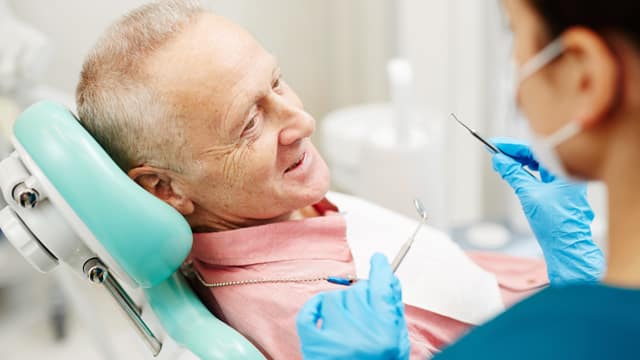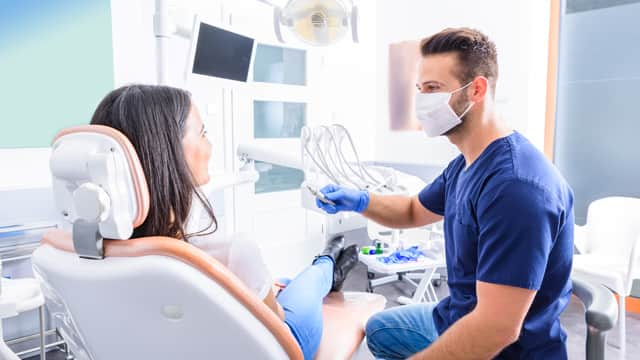What's the Difference Between Removable and Fixed Bridges?
Removable bridges have crowns on either end that clip onto existing teeth (filed down by a dental professional to fit correctly). If you get these impermanent teeth replacements, you'll need to take them out to clean them every day. People who choose removable bridges over fixed bridges often do so because they come at a lower cost and don't require surgery.
Fixed bridges look, feel, and function similarly to real teeth because they are attached to dental implants – metal fixtures that are surgically fastened to your jawbone below the gums. The American Academy of Implant Dentistry says that 3 million Americans have dental implants, and that number is growing by 500,000 every year. These metal implants become anchored to your bone through osseointegration (the bone fuses to the metal). This process provides stable support you can rely on while eating and speaking. According to the Cleveland Clinic, the healing process after getting an implant can take 6-12 weeks. Your dental professional will then place a metal post (or abutment) into your implants, onto which they will mount your crown.
Whichever of these replacement tooth options is best for you – they can be vital in maintaining your oral health. Gaps in areas of loss can cause your other teeth to begin rotating or shifting into the empty spaces, resulting in a bad bite. And missing teeth can even lead to gum disease and temporomandibular joint (TMJ) disorders.
Learn about dental bridge procedures.
What's It Like to Get a Removable Bridge?
When you first get your removable dental bridge, your dental professional will probably tell you how long you should wear it without taking it out. They may ask you to wear it all the time at first so they can identify areas of discomfort and make necessary adjustments. Your removable dental bridge will likely feel uncomfortable at first, but after adjustments and over time, you'll get used to it, and your eating and speech can even improve.
What to Expect After Your Adjustment
After your dental professional makes adjustments, your bridge should fit easily into your mouth. It may still feel a bit awkward at first, but you’ll be able to remove the bridge for cleaning and when you go to bed. It may take a little practice to get used to removing and replacing the bridge, but your dental professional will talk you through it and may send you home with instructions. While you're getting used to placing it correctly in your mouth, it's important to remember not to bite down on the crowns to force them into place – this could damage your new bridge.
How Do You Eat With a Removable Bridge?
When you first get your removable bridge, eating softer foods that have been cut into small pieces is best. Chew evenly on both sides of the mouth, and avoid eating tough, hard, chewy, or sticky foods, like:
- Steak
- Nuts
- Caramel
- Chewing gum
These are just a few examples of the foods that can cause problems for your new removable bridge. Use your best judgment, and speak with your dental professional if you have any questions.
How to Clean a Removable Bridge
To properly care for your removable dental bridge, you need to clean food debris and plaque from all parts of your bridge every day. Here are a few tips you can use to take great care of your replacement teeth:
- Clean your removable bridge over a sink full of water or a folded towel so that, if you drop it, it won't break.
- Use a soft-bristled toothbrush or a denture brush and cool water. You can use denture cleaner, but don't use abrasive toothpaste or household cleaners, which can scratch your bridge's surface.
- After brushing, rinse with cool, clean water. Hot water could warp your bridge.
- Don't leave your bridge in water or a denture-soaking solution overnight unless your dental professional advises you to. The metal attachments on your removable bridge could rust.
If you decide a removable dental bridge is the best option for you to replace your missing teeth, we hope this information gives you confidence that you know what to expect after you get your bridge and what steps you can take to care of your new teeth properly. By practicing good oral hygiene, taking good care of your bridge, and seeing your dental professional for regular cleanings, your removable bridge will be attractive, functional, and stain-free for years. Now, that's something to smile about.
This article is intended to promote understanding of and knowledge about general oral health topics. It is not intended to be a substitute for professional advice, diagnosis or treatment. Always seek the advice of your dentist or other qualified healthcare provider with any questions you may have regarding a medical condition or treatment.
ORAL HEALTH QUIZ
What's behind your smile?
Take our Oral Health assessment to get the most from your oral care routine
ORAL HEALTH QUIZ
What's behind your smile?
Take our Oral Health assessment to get the most from your oral care routine















